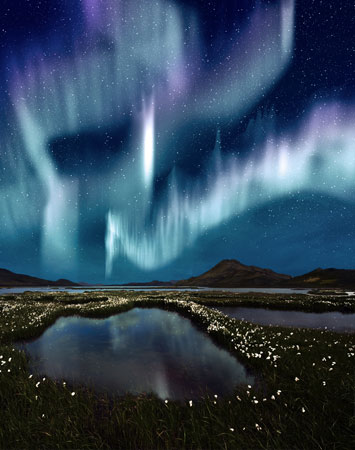
In my article “13 Photography Myths Every Photographer Should Know,” I explain my findings from testing various photography beliefs. One of them is this… that night photographers need to block the optical viewfinder to prevent light leaks.
DSLR cameras work by passing light through the lens, bouncing it off the mirror, flipping the image through a prism, and then showing the image to the photographer through the optical viewfinder. When the image is taken, the mirror flips up for an instant and reveals the sensor which records the picture. Since the design of the DSLR is so open, many night photographers have reasoned that light could “leak” through the optical viewfinder and reach the sensor. While this has little effect when shooting during the day when short shutter speeds are used, night photographers have worried about light leakage for years.
As an avid night photographer, I have always followed the sage wisdom of covering the optical viewfinder with my thumb or a piece of cloth when taking long exposures to prevent any stray light from entering the camera from the optical viewfinder and ruining the photo.
However, I decided to test this myth last week to see if light leakage is actually something that photographers need to worry about.
How I Tested the Theory
To test this myth, I put the lens cap on the lens and then covered the front of the lens in aluminum foil and several layers of blankets so that I could be absolutely certain that no light entered through the lens.
The next step was to accentuate the light that could come through the optical viewfinder. To do this, I used a spotlight and shined it through the optical viewfinder while I took a long exposure picture of 30 seconds. I figure that if the tremendous amount of light from my spotlight could not succeed in producing a light leak, nothing could.
Then, I turned up the ISO to make sure it would record any tiny bit of light leak that came through.
I then took several pictures with the spotlight shining and then with no spotlight and the optical viewfinder covered.
The Results
After taking the pictures, I looked at them expecting to see some light leakage on the photo with the spotlight and the uncovered optical viewfinder…. but there was none. The picture was completely black.
I don't mean that it was black to my eye. It was literally black. I took the photo into Photoshop to analyze it and see if there was any light level recorded at all. No. Completely black.
The Re-Test
After I tested this theory, Dustin Olsen also tested the light leak theory and came to the same result. I did not tell him the results from my testing, so it was a blind study. Also, he used a Canon DSLR whereas I used a Nikon to do the testing. No light leak. Both photos were completely black.
The Takeaway
There are many things that photographers need to worry about when taking photos at night (such as focusing)! What I learned from this test is that worrying about light leaking through the optical viewfinder is completely useless. I am convinced that modern DSLRs simply do not suffer from this problem. If a spotlight shining through the viewfinder for 30 seconds does not produce light leak, no normal condition in the field could.
If you enjoy these daily photography tips, please LIKE Improve Photography on Facebook.

I think you misunderstand the purpose of covering the viewfinder.
It is not to prevent light entering the camera via the viewfinder from adding to the exposure of the film or sensor.
Rather, it is to prevent the light entering the camera via the viewfinder from influencing the camera’s light meter, and misleading the photographer as to the amount of light present in the scene. If you don’t cover the eyepiece, you will tend to underexpose your shots.
HTH
–Benjamin Green
I was just about to say the same thing, Benjamin. With the mirror up, you’d need an awful lot of light behind the veiwfinder to get to the film (or sensor).
Then why didn’t the cameras light meter desperately try to allow more light in?
I think the test shows that light gets to the light meter only through the lens.
Jim is right.
I tried the very same experiment as you (with a Nikon d5100) and reached the same results. There is absolutely no leakage through the viewfinder that reach the sensor.
However, it does influence the metering system. For example if you set your camera on aperture mode, you will notice a difference of shutter speed proposed depending on whether you taped the viewfinder or not (longer shutter speed if you tape it).
That being said, it is probably irrelevant for night shots…
Hi,
I don’t know what test did you make, after I read your test I went to make my test.
in all the shots that I made it, the light leak is there. all the shots, including video test.
I cover the lens and put a flash light pointing to the view finder.
all the best
I think this will diver per model, perhaps per unique unit shipped. I’m currently testing out the noise sensitivity of a few bodies, doing 5min. exposures at ISO800 and the D5100 showed a light band on the top which I suspect is light leakage from the view finder. (the sun was shining on it).
Earlier similar tests with my Nikon D7000 showed no leakage.
If you take long exposure pictures (street photography for instance) during a bright sunny day (using ND filters of course), the amount of light is much more than that coming from a spot light. I think your experience is nice, but not 100% conclusive!